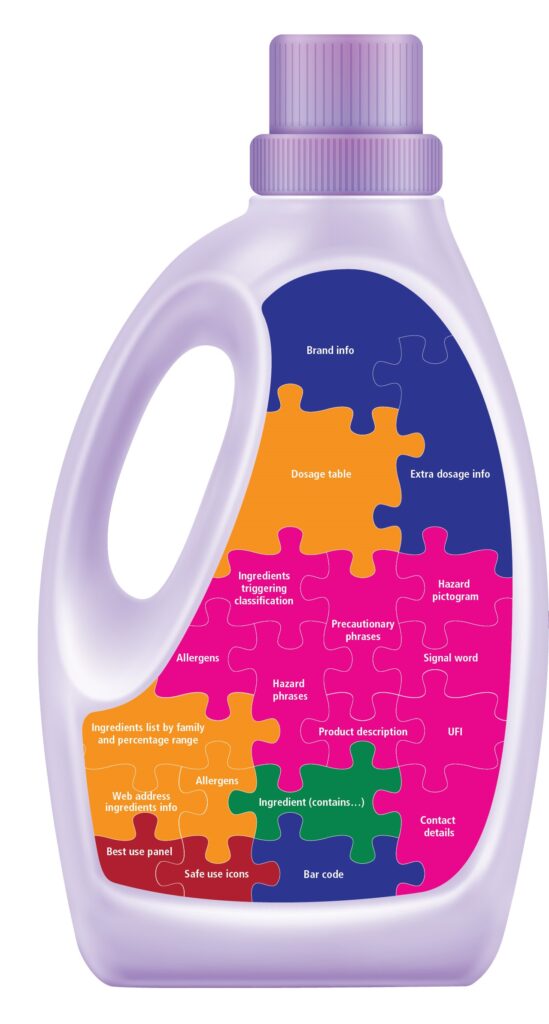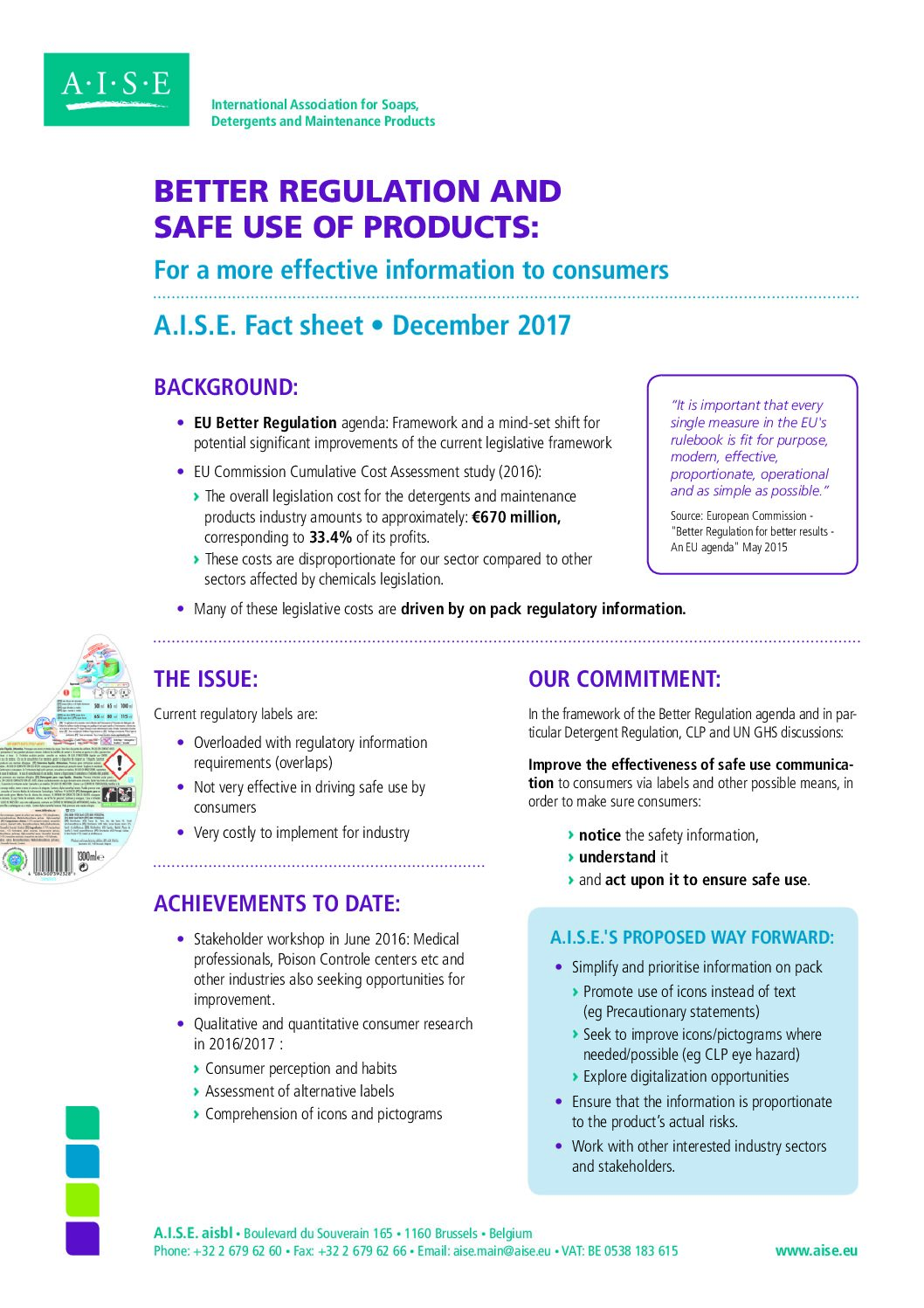
Labels on household cleaning products contain important information but they can be confusing and difficult to read. The main purpose of the label is to provide the user with information on how to apply the product correctly and safely. However, overlapping legislative requirements mean this vital information is often overlooked by consumers.
European legislation such as the EU Detergents Regulation defines what information manufacturers are required to place on the label of household cleaning products. However, other horizontal legislation such as the Classification, Labelling and Packaging (CLP) Regulation or the Biocidal Products Regulation (BPR) introduce additional labelling requirements. To be compliant, manufacturers must adhere to all legal requirements. This results in excessive amounts of text that overlaps, including redundant labelling provisions for ingredients, allergenic fragrances and preservatives. The result is labels that are often crowded, and essential safe use information is not easily found.
Optimising the opportunities offered by digitalisation
A.I.S.E. is convinced of the opportunities that digitalisation offers in improving the readability of labels on products, by providing consumers in particular with essential information on the product and more extensive information online. A.I.S.E. has been building the case for digitalisation of product label information for some years. It will simplify labels, drive safe use by highlighting essential safe use behaviour on product packaging and thereby enhance consumer confidence in products.
Duplication of safety information and inconsistencies
Studies by the European Commission have acknowledged the discrepancy and duplication in labelling requirements affecting detergent and maintenance products on the market today. With the digital agenda now a priority for the Commission, A.I.S.E. is keen to identify solutions with digital tools and has contributed information on several fronts – including to the Commission’s study on digitalisation and labelling.
Simple and visual labels are most effective
A.I.S.E.’s extensive research on the understanding of product labels shows that product labels are consumer over crowded with information and as such unattractive: 80% of consumers prefer simpler labels, with less text and more visuals such as icons. Eye tracking demonstrated the value of such pictograms, with a person spending on average 22 seconds looking at a label. . The presence of safety information on the label is appreciated and the most important A.I.S.E. safe use icons were adequately understood – especially the icon ‘keep away from children’ – which was better understood than the hazard pictograms required by CLP.

This research covered household detergent and maintenance products and involved interviewing consumers both inside and outside Europe to understand which approaches were most effective in communicating.
93% A.I.S.E.’s “Keep Away From Children” pictogram has a very high level of consumer understanding

Three alternative labels assessed by consumers show consumers prefer 1) and 2) the simpler, more graphic alternative labels to 3) the current label required by the CLP Regulation Download


Testing consumers’ perception of online information
In further research, A.I.S.E. investigated with consumers the strength of labels, their willingness to scan a QR code for additional information and their online experience for explanations on product ingredients and hazards, dosage and sustainability information. The findings indicate once again that shorter labels are the preferred option on the product due to being clearer and easier to read. Those researched liked to scan for further information and mainly expect to find safety, ingredient and allergen information online, although the full list of allergens is expected to be published on the printed label too. The test website carrying information on hazards and safe use, ingredients and allergen information was very much appreciated by those surveyed, with the expectation of it providing information in a non-technical way that complements a simpler label.
A.I.S.E. continues to advocate for more use of icons and visual labels, moving extensive regulatory information online and focussing the label on key information for safe use.






